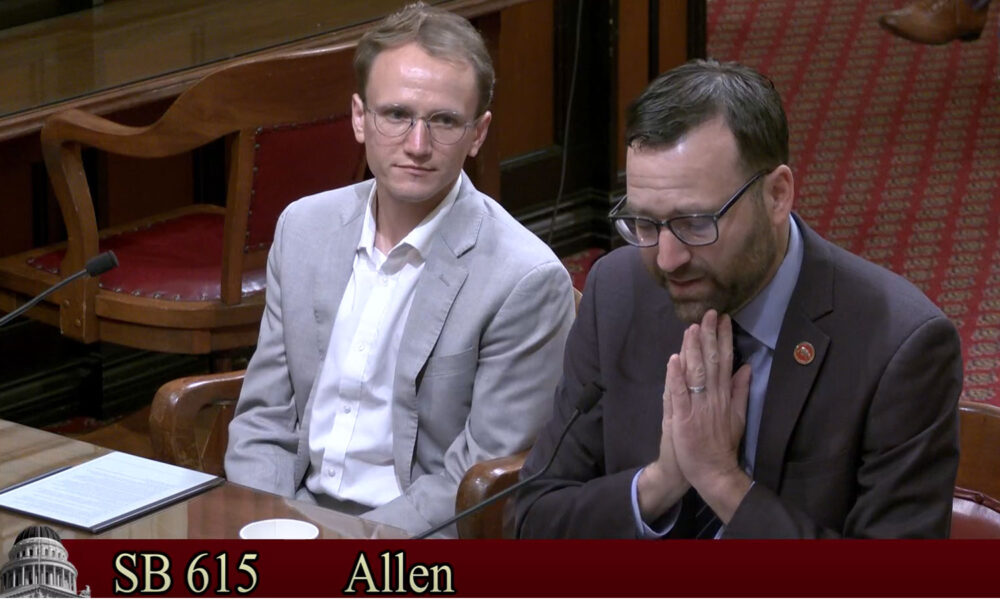Electric vehicle (EV) sales are increasing, and these vehicles are important to reduce fossil fuel use and air pollution. Increasing sales means more EVs eventually reaching their end of useful life. When an EV retires, the battery can be recycled and the materials recovered to make new batteries. These recovered materials replace what would otherwise be mined, which lessens the environmental and social impact of production. If we recycle batteries using processes that have high mineral recovery rates, by 2050 we can meet more than half of our demand for lithium, cobalt, and nickel for new EV battery manufacturing with recycled materials
The US needs a comprehensive policy to manage the EV batteries that will be retired. Relying on market dynamics alone risks wasted materials, unsafe and unregulated dismantling, and a lack of accountability for proper disposal.
Various states are looking at policy approaches, with California Senate Bill (SB) 615 entering its third year of negotiations. The California bill includes the following important aspects of a recycling policy:
- Creates a framework where manufacturers are responsible for the end-of-life management of batteries they produce.
- Creates a certification process for EV battery recyclers, with criteria based on worker safety and environmental impact.
- Outlines reporting requirements that will increase transparency around recycling and mineral recovery.
- Encourages the sharing of battery state of health, which could increase the ease and safety of remanufacturing and repurposing of batteries retiring from an EV for other uses.
5 years of stakeholder discussions
The progress of SB 615 bill over the legislative session will determine if a comprehensive EV battery recycling policy will finally be made law in California. SB 615 is the culmination of stakeholder conversations that began in 2019 when the California Lithium-ion Battery Recycling Advisory Group first met. In the 2024 California legislative session, both houses passed SB 615, but it was vetoed by Governor Newsom, due to concerns related to administrative costs of implementing the regulation. SB 615 has since cleaned up reporting language and created a more comprehensive extended producer responsibility framework to address those concerns. While the bill is robust, we urge policymakers to also add mineral recovery rate requirements and anti-smelting language. These are essential to ensuring that minerals are consistently recovered, despite fluctuating mineral prices. And while it appears the EV battery recycling industry is heading toward more effective recycling methods, smelting is a high environmental impact process and unnecessary for effective recycling. Therefore, the policy should prohibit it.
A group of stakeholders, including myself, have been continuing discussions around EV retirement and recycling policies in various states with local policymakers, industries, NGOs, and regulators. To date, the only US EV battery recycling requirement is in New Jersey, but this law doesn’t include key aspects that are needed to ensure clean recycling, such as environmental standards, mineral recovery rates, or identifying who is responsible for covering the cost of collecting and transporting the batteries when they are retired. A stakeholder-led bill in Washington State, HB 1550, created an ideal framework by incorporating a stronger environmental stance that included required mineral recovery rates and a ban on smelting. While the bill missed the First House deadline, we hope to see it reintroduced in 2026. In addition, New Mexico, Nevada, Massachusetts, and New York have differing bills that were introduced this year.
Why do we need EV battery recycling policy?
In order for the recycled materials to replace the need for newly mined minerals, all batteries must first make it to the recycling facility, and then the minerals must be recovered at a high rate. Some batteries are profitable to recycle—such as those that contain high-value minerals like nickel and cobalt. Batteries that are not damaged or are close to a recycling facility are also typically profitable to recycle. It is unlikely that batteries will be properly recycled without policy intervention under the following circumstances:
- A battery is damaged or defective and therefore needs additional packaging and precautions to be shipped;
- a battery is in a rural location adding to transportation costs;
- a battery does not contain high value nickel and cobalt, such as the lithium-iron-phosphate batteries (LFP) now being used by Tesla, Ford, and Rivian; or
- lithium prices are lower than the cost of recovery
Recycling policies can ensure all batteries are recycled, minerals are recovered, and, provide a steady stream of batteries for recycling companies that are expanding. For more information, please take a look at some of my other blogs on recycling processes, battery repurposing, state of health assessments, mineral demand, and transportation reform.

